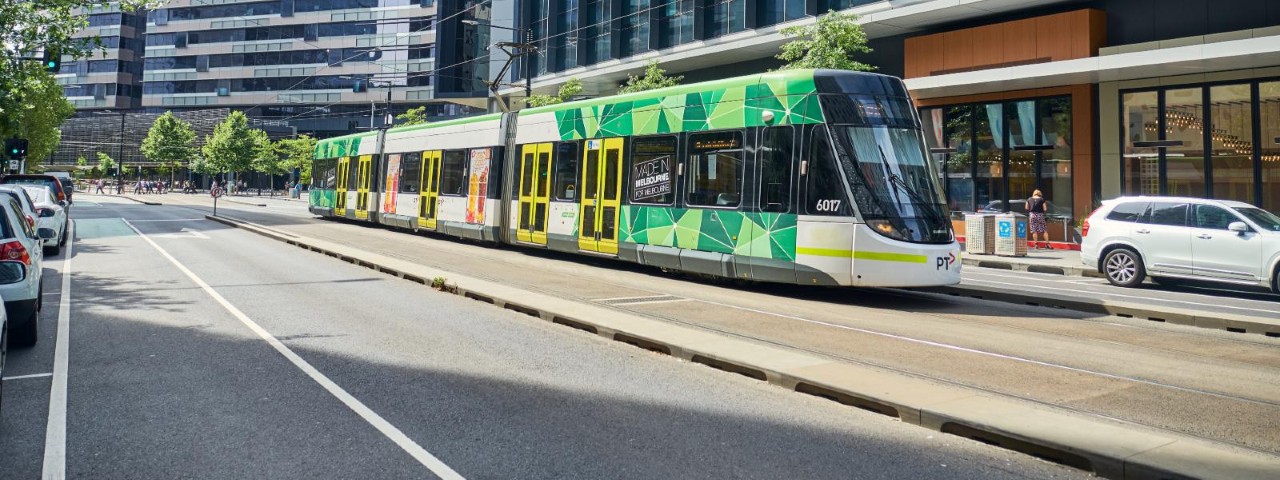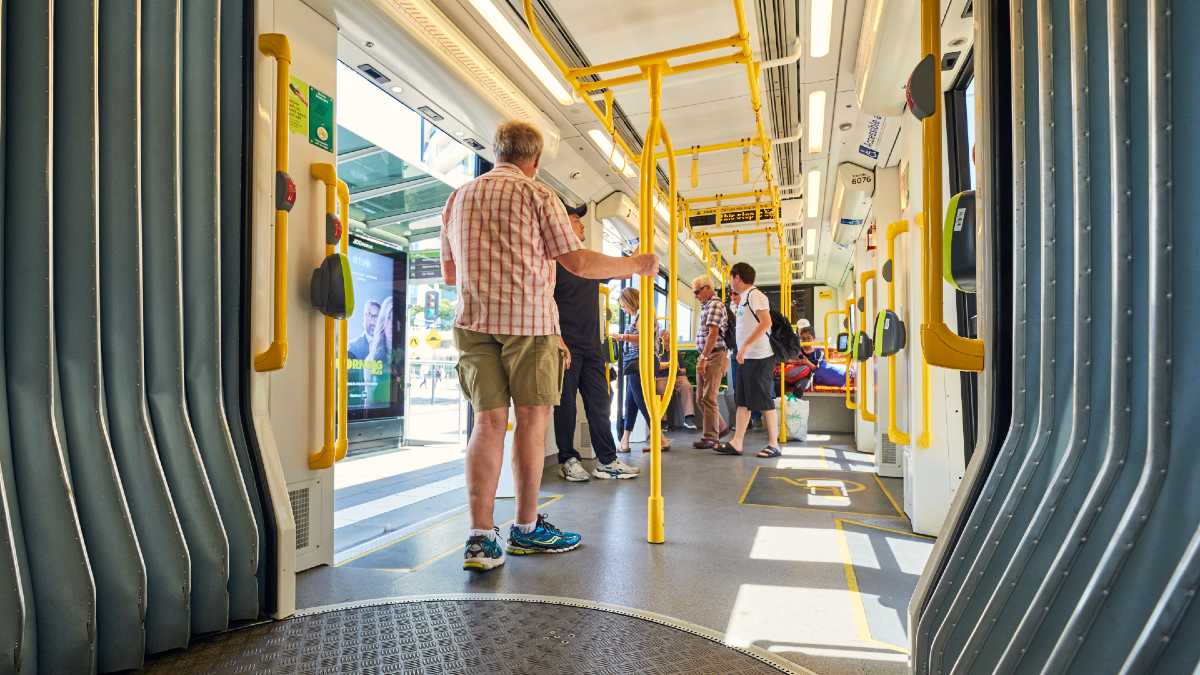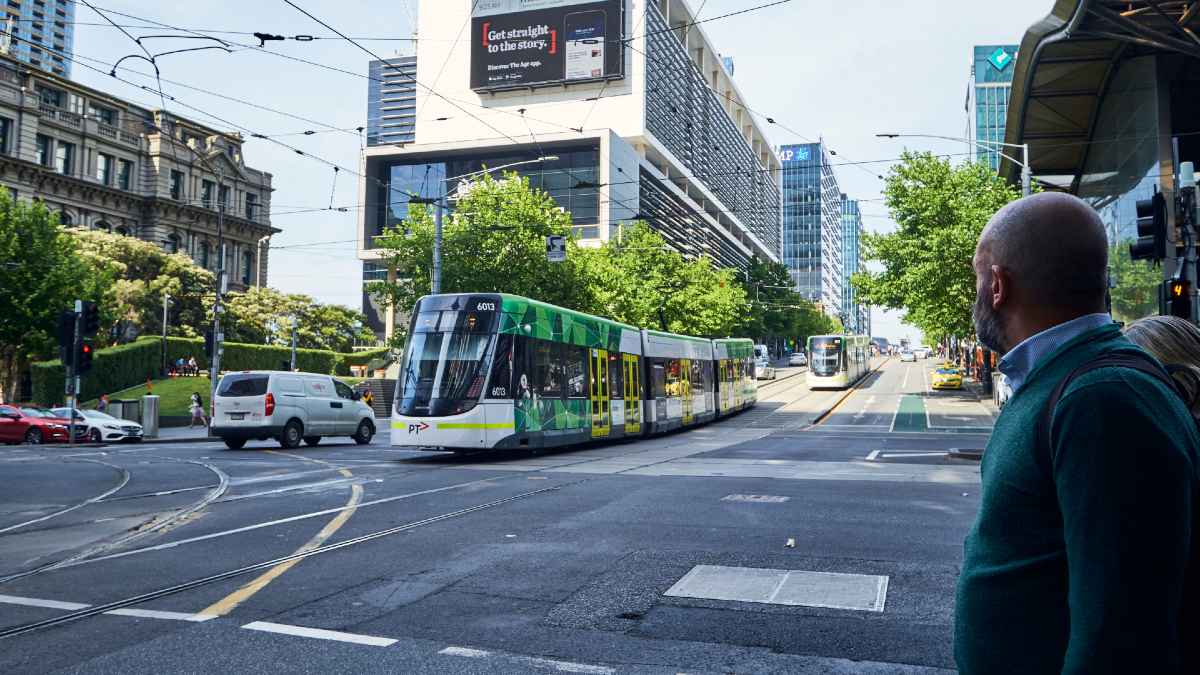Here's what you need to know about when Melbourne's Metro Tunnel is opening, the new stations and how it will affect you.
‘Separation kerbing’ reducing tram-vehicle collisions

An average of 20 cars are colliding with trams every week across Melbourne's 250km-long tram network. That’s why raised kerbing is being rolled out to help put an end to the trend.
Trams are an iconic form of public transport for Melburnians, with more than 200 million journeys completed every year.
But not everyone is arriving at their destination safely.
Each day, there is an average of three vehicle-to-tram collisions across Melbourne’s 250km-long tram network, resulting in hundreds of collisions every year.
During 2021 there were 673 vehicle-to-tram incidents, representing a 15 per cent increase on 2020 figures (583 incidents).
Trams share our roads with motor vehicles, but unlike cars, buses, and trucks, trams can’t swerve. This means that if a vehicle crosses into the path of an oncoming tram, the only option tram drivers can take is to brake.
When forced to brake suddenly to avoid or minimise damage in a collision, passengers onboard the tram can be injured, particularly if they’re not seated or holding onto a safety rail.
“Because of the diversity of mobility in the CBD, Melburnian motorists have a unique set of hazards they need to be mindful of,” says RACV Head of Policy James Williams.
“Trams are just one of those additional modes of transport that drivers need to be mindful of along with awareness of pedestrians, cyclists and e-scooter users in the CBD.”

Passengers can be injured if trams are forced to brake suddenly to avoid a collision. Image: Matt Harvey
Kerbing collisions
One way to reduce tram-car collisions is to reduce the ability for motor vehicles to cross paths with trams.
In Melbourne, this is being achieved by installing ‘separation kerbing’. Much like regular kerbing that separates the footpath and the road, separation kerbing is raised concrete rails or humps that separate tram tracks from the road, putting a physical barrier between motor vehicles and trams.
Importantly, this kerbing does not prevent emergency vehicles from accessing tram tracks when necessary, and includes breaks for motorists to cross tram tracks safely.
In 2021, this kerbing was installed on Bourke, Collins and Elizabeth streets in Melbourne’s CBD, resulting in an approximate 30 per cent reduction in vehicle-to-tram collisions.
Following this, and additional five kilometres of kerbing will be laid along Latrobe, Flinders, Swanston, Spring, Market and Spencer streets between August and November 2022.

Separation kerbing has helped reduce vehicle-tram collisions by 30 per cent in Melbourne's CBD. Image: Matt Harvey
How to drive safely around trams
Separation kerbing is one way to help reduce collisions between vehicles and trams, but it’s also important that motorists know how to drive safely on shared roads.
Give way to trams
A standard car weighs in at around one tonne. A standard tram can weigh up to 50 tonnes. For this reason alone, it’s important to always give way to oncoming trams.
This includes at roundabouts, even if you think you would normally have right of way. Do not attempt a U-turn across tram tracks if there is an oncoming tram or if you have to cross a solid line to do so. Don’t block tram tracks if making a right turn in a hook turn-only intersection.
Give way to passengers
Some tram stops require passengers to board or alight directly from the road. At these stops you must come to a halt behind the tram, allow all passengers to board and alight, and wait until the doors close before continuing to travel past the tram, at a maximum of 10km.
Pedestrians can often dart in front of traffic suddenly to avoid missing the tram, so stay alert.
Avoid driving on tram tracks
More than 75 per cent of Melbourne’s tram network shares the road with other vehicles, but it’s important that motorists avoiding driving on tram tracks where possible.
You may drive on tram tracks to avoid obstacles, or if necessary to make a legal right turn. If turning, you should wait until you’re 50 metres from the turn before crossing onto the tram tracks.
Check for trams
If you are driving on or next to tram tracks, stay alert for trams. Do not move into the path of an oncoming tram.


